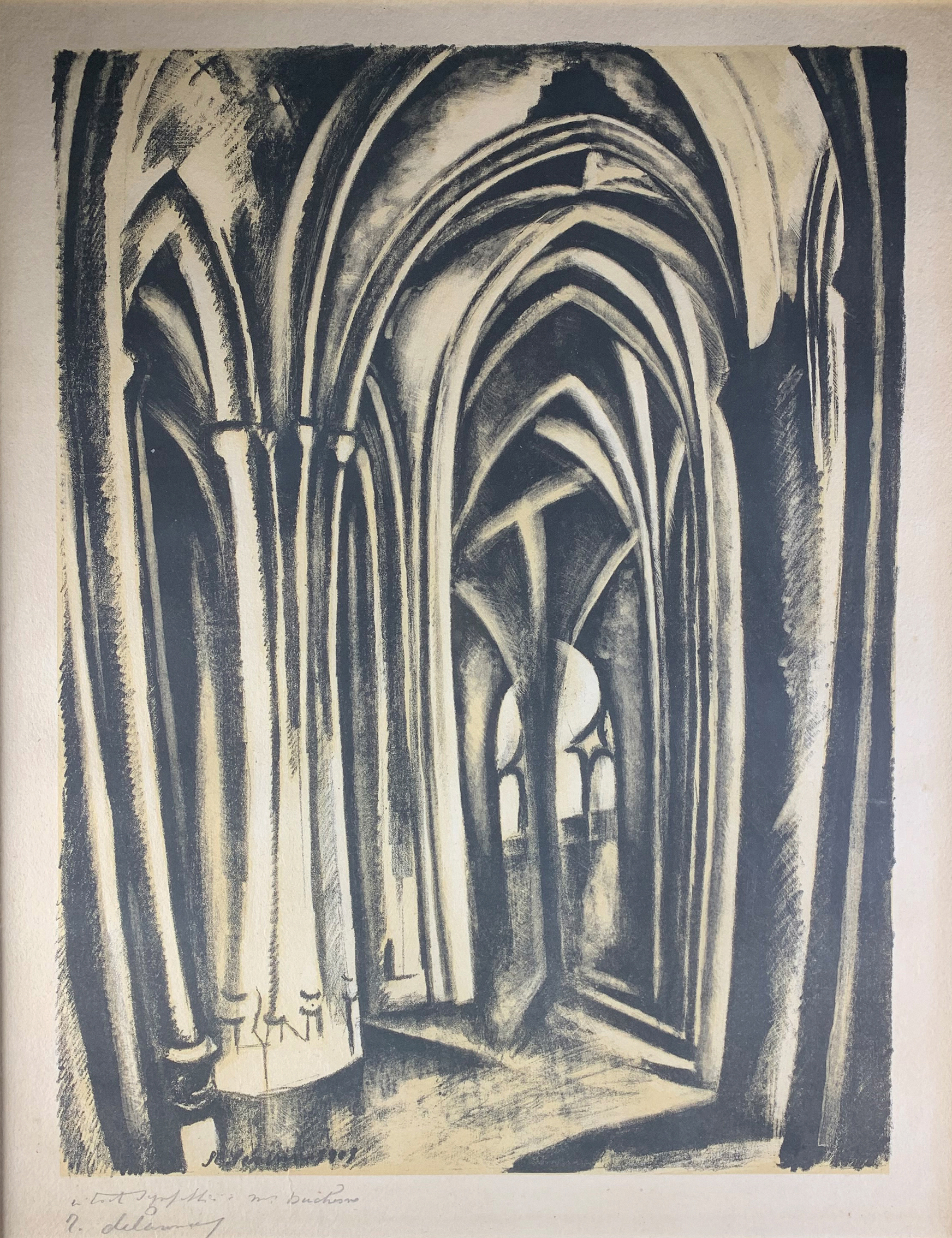
|
|
L'Eglise Saint
Séverin
Loyer &
Perussaux 2
lithograph,
circa
1923-25*, a very fine impression, the only known state, of the utmost
rarity, printed in black over a pale yellow-bistre tint stone ("pierre de teint")
on medium-heavy wove paper, exceptionally signed and
dedicated by the artist in pencil ("en toute sympathie à Mr Duchesne", lower left), with good
margins,
probably a proof from the first edition (size unknown though apparently
very small; there was at least one later edition**), very slight time-staining and
some light unobtrusive foxing, a diagonal crimping in the far lower
left corner (this impression has never been cleaned), and a short printing crease lower edge of the image, otherwise in very good condition
P.570x420mm., S. 635x495mm.

|
Provenance: a private French collection
The present impression of this
important print is difficult to describe fully, as little is apparently known of its conception,
execution, and edition... even in the entry of the catalogue
raisonné! Loyer & Perussaux only specify that impressions
from the first print run are extremely rare ["Rarissimes épreuves du tirage de l'époque..."]
It would be tempting of course
to date it to 1909, situating the lithograph in an early conceptual
role for this seminal Series of paintings in Delauunay's development of "Orphic"
cubism.
The conception of the Series is worth investigating. Dated 1909-10, there is a graphic sketch of the vaulting in Saint-Séverin (see https://www.centrepompidou.fr/fr/ressources/oeuvre/cEnerj9) for the series that demonstrates Delaunay's aesthetic intentions, and they already seem to be well in place.
Though Apollinaire speaks of "noblesse de la ligne",
another valid analogy would of course be musical: rhythm, resonance,
harmonics, shifts, transitions, both in space and color (and it is well known that Delaunay
studied Michel-Eugène Chevreul's theory the simultaneous contrast of
color), and this may be seen in the formal interplay of space and color
among the pictures themselves.
The Series comprises 7 canvases in all, first three of which may be seen here:
- N° 1
https://commons.wikimedia.org/wiki/File:Robert_Delaunay,_Saint-S%C3%A9verin_No._1,_1909.jpg
- N° 2 https://collections.artsmia.org/art/772/saint-severin-robert-delaunay
- N° 3 https://www.guggenheim.org/artwork/1017
It should also be noted that Kandinsky invited Delaunay in 1911 to take part in the first Blaue Reiter
exhibition at Munich, where he sent five works, including the
Saint-Séverin N° 1. He was quite favorably recognized by the
German critics, who would soon refer to him as the first-known
Expressionist!
* The print is sometimes dated to 1909, as indicated in the lower inscription by the artist in the stone.
** According to Loyer & Perussaux,
there is a posthumous edition undertaken by Sonia Delaunay in 1969,
with 75 impressions printed in black, 25 impressions H.C., signed
"pour Robert Delaunay/ Sonia Delaunay", and bearing the oval stamp "ATELIER ROBERT DELAUNAY" in red:
-
https://commons.wikimedia.org/wiki/File:Robert_Delaunay_Saint_Severin.jpg (apparently from a Bonham's sale)
There
are however certain impressions, ostensibly from this posthumous
edition, that have the additional bistre tone plate:
-
https://www.sothebys.com/en/auctions/ecatalogue/2005/old-master-modern-and-contemporary-prints-including-andy-warhol-and-the-pop-generation-l05160/lot.48.html
It should be added that some early first edition impressions are
described as signed by Sonia Delaunay as well, cf.
https://www.auction.fr/_fr/lot/robert-delaunay-saint-severin-vers-1923-1925-748430


